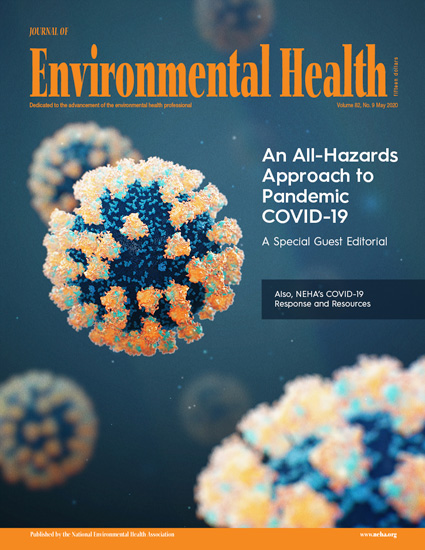The study of the completeness of the removal of the detergents from children's clothes by the amount of anionic surfactants in wastewater
IF 5.3
2区 环境科学与生态学
Q1 ENVIRONMENTAL SCIENCES
引用次数: 0
Abstract
Objective: We determined a safety level of the agents by the residual amount of the anionic surfactants in wastewater from the objects after their washing with the agents for the treatment of children's products. Materials and methods: 16 detergents for children's clothes washing were purchased at the supermarkets of Kyiv. In our study we applied sanitary-and-chemical research methods: express method for the assessment of the anionic surfactants on the clothes fabrics; an extraction-photometric method for the determination of the the residual amount of the main active substances of the anionic surfactants in the experimental sample. Results: The analysis of the results shows that there is a significant difference in the surfactant amount in the wastewater after washing with powder and liquid detergents based on the synthetic anionic surfactants and natural soap. Therefore, the anionic surfactants are rinsing best of all from the clothes washed with the detergents based on natural soaps (Soaps “Droog”, “Clean & White”, “Kroha”). After washing of the children's clothes with powder and liquid detergents for automatic washing based on synthetic anionic surfactants, the residual amount of the anionic surfactants on the fabrics exceeds the accepted hygienic standard. Conclusions: It has been discovered that even after repeated rinsing, the fabrics, treated with washing powder and liquid detergents, contain the residual amount of the anionic surfactants that exceeds normative parameters (8 of 13 investigated detergents based on the anionic surfactants) by 2-3 times. Taking into account a specificity of children’s functional skin state, especially the incompletely formed multistage protection system, it is recommended to use the detergents based on natural soap and products containing less than 5% of the surfactants for washing of the clothes of the children aged 0 to 6 years.研究了污水中阴离子表面活性剂用量对童装洗涤剂去除效果的影响
目的:通过对儿童用品处理剂洗涤后产生的废水中阴离子表面活性剂残留量的测定,确定其安全水平。材料和方法:在基辅超市购买了16种儿童洗衣用洗涤剂。本研究采用卫生化学研究方法:用速递法评价服装织物上阴离子表面活性剂的含量;一种测定阴离子表面活性剂中主要活性物质残留量的萃取光度法。结果:分析结果表明,合成阴离子表面活性剂和天然皂基洗衣粉和液体洗涤剂洗涤后废水中表面活性剂的含量存在显著差异。因此,阴离子表面活性剂在用天然肥皂(“Droog”、“Clean & White”、“Kroha”等肥皂)洗涤的衣服上漂得最好。以合成阴离子表面活性剂为基础的自动洗涤粉剂和液体洗涤剂洗涤儿童衣物后,织物上阴离子表面活性剂残留量超过公认的卫生标准。结论:经反复漂洗,经洗衣粉和液体洗涤剂处理的织物,阴离子表面活性剂残留量超过标准参数2-3倍(13种以阴离子表面活性剂为基础的洗涤剂中有8种)。考虑到儿童皮肤功能状态的特殊性,特别是多级保护系统的不完全形成,建议使用以天然肥皂为主的洗涤剂和表面活性剂含量低于5%的产品来洗涤0 - 6岁儿童的衣物。
本文章由计算机程序翻译,如有差异,请以英文原文为准。
求助全文
约1分钟内获得全文
求助全文
来源期刊

Environmental Health
环境科学-公共卫生、环境卫生与职业卫生
CiteScore
10.10
自引率
1.70%
发文量
115
审稿时长
3.0 months
期刊介绍:
Environmental Health publishes manuscripts on all aspects of environmental and occupational medicine and related studies in toxicology and epidemiology.
Environmental Health is aimed at scientists and practitioners in all areas of environmental science where human health and well-being are involved, either directly or indirectly. Environmental Health is a public health journal serving the public health community and scientists working on matters of public health interest and importance pertaining to the environment.
 求助内容:
求助内容: 应助结果提醒方式:
应助结果提醒方式:


